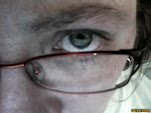Limp-uh-deema
The title for this post came from J, my 4yo who was born with primary bilateral lower limb lymphedema--that's how she pronounces lymphedema (it's "lim-feh-deema" if you're wondering).
You can find more info on lymphedema (LE for short) by following the links to the left. The thing you will learn fastest is that there is close to nothing for info on pediatric LE. (You don't have to capitalize 'le' but it's easier to read that way.)
I'll work on updating the links and looking for more recent info (most of the info online hasn't changed since 2001 when we first started looking), but in the meantime, I'll give ya the quick & dirty explanation.
We're gonna compare (loosely) your body & your house.
The circulatory system is roughly equivalent to the fresh water coming in, the stuff you use to bathe, wash dishes...distribute vitamins and minerals and basic building blocks throughout the body, carry oxygen to the cells.
The lymph (or lymphatic, depends who ya ask) system acts like the wastewater, y'know, the flushing toilet, pipes under the disposal...carrying away cellular waste, dead white cells, excess interstitial fluid (the fluid between cells) that leaks from the circulatory system.
In a person with lymphedema the lymph vessels are damaged in some way (too big, too small, weak valves, nodes damaged or missing as a result of cancer treatment) and don't remove the cellular waste. This results in an accumulation of waste and fluid (collectively, lymph) in the portion of the body where the vessels are impaired. It's most common in the extremities (hands/arms, legs/feet) but can occur in anywhere in the body. We'll talk feet since that's J's prob and what I'm most familiar with.
The fluid accumulates in the feet & toes and can't get out because the system is impaired. Result? My daughter was born with feet the size of oversized lemons and toes swollen to the point the nails were almost invisible. The fluid is chock full of dead cells and other protein waste. One of the biggest dangers to a LE patient, if not the biggest danger, is infection. Any damage to the affected limb that breaks the skin (cut, scratch, bug bite) is a place where bacteria can get in... Once they're in that collected lymph fluid is like a bacteria buffet. The infection caused is called cellulitis and can be life-threatening if not addressed as soon as possible.
There is no cure for LE. There is no wonder drug, the only drugs that have shown any success in the past were pulled because they helped with the swelling, yea, but they destroyed the liver (benzo-pyrone, if you're curious).
The only effective way to counteract LE is with CDT - Complex/Comprehensive (again depending on who you ask) Decongestive Therapy. This is a multi-stage treatment centered around lymphatic massage, more accurately MLD (manual lymph drainage). This is a type of massage performed by specially trained therapists specifically for lymphedema. There are spas now offering 'lymphatic massage' or 'lymphatic drainage'; this is NOT the same thing.
The next phase involves bandaging the affected area, usually in multiple layers, sometimes with foam inserts underneath, to help encourage continued movement of the fluid (started by the massage) and prevent the fluid from flowing back into the area. It also helps lymph flow by providing resistance. Since the lymph system, unlike the circulatory system which has the heart, has no pump, the fluid is moved by muscle action and the resistance provided by bandages helps with this. Bandaging is generally reserved for the intense stage of treatment, when the goal is reduction in the size of the affected area and/or wound healing.
Maintenance after intensive treatment involves continued massage at home and garments. The garments vary from support-style stockings, similar to those used by diabetics, to heavy duty foam padded garments, more often used for nighttime compression.
Oy. This was supposed to be the short version, so Imma stop now. For more info, look over the links to the left.


0 Comments:
Post a Comment
<< Home